GlobalSat WorldCom BT-332 Bluetooth GPS Receiver User Manual Manual
GlobalSat WorldCom Corporation Bluetooth GPS Receiver Manual
Manual
1
User Manual
Bluetooth GPS Receiver
BT-332
Ver 1.0
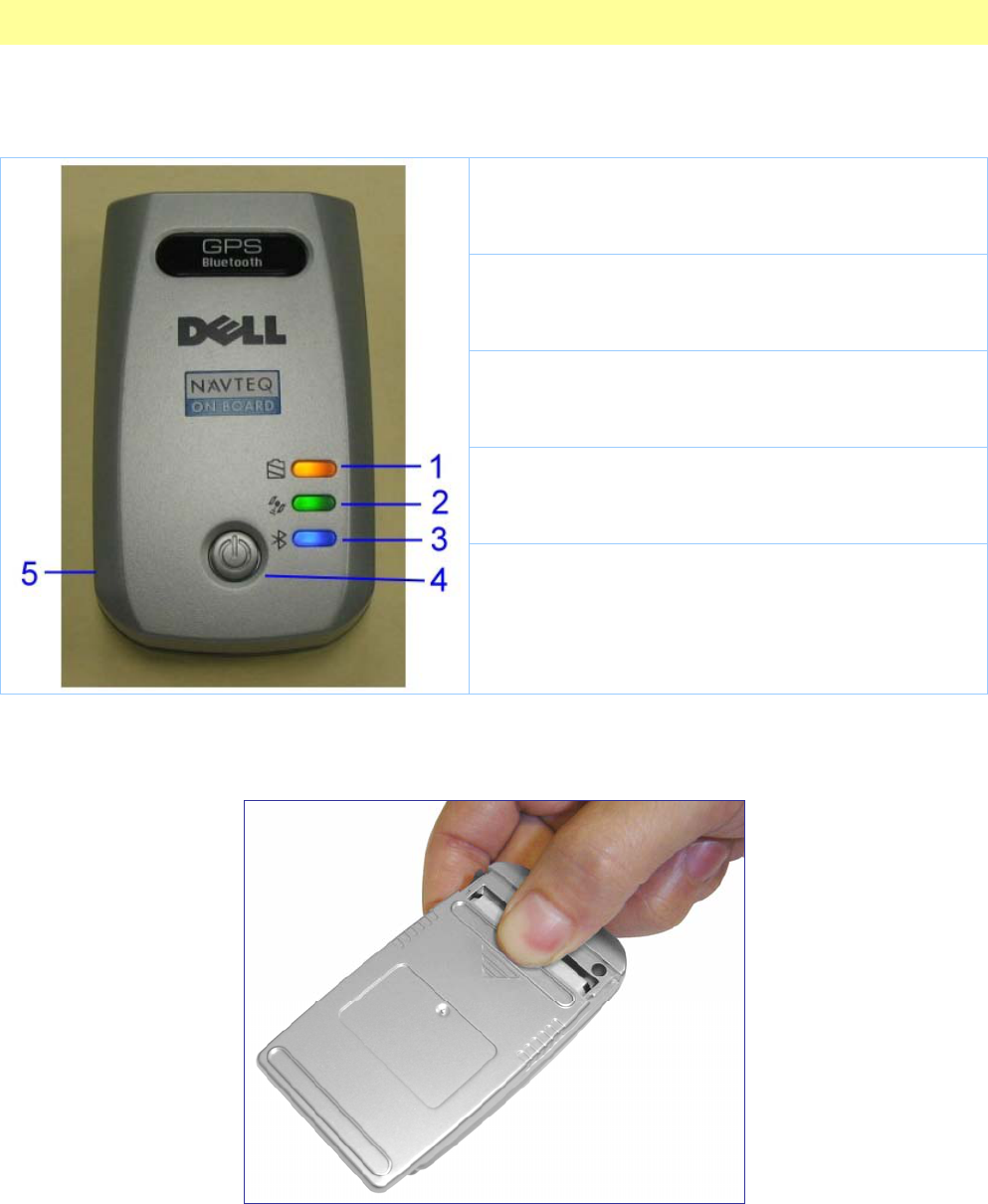
2
1. BT-332 at a glance
1.1 Appearance and Function
1. Power LED
2. GPS Status LED
3. Bluetooth Status LED
4. Power Button
5. Power Jack
1.2 How to change battery
Figure 1, Open the cover of battery
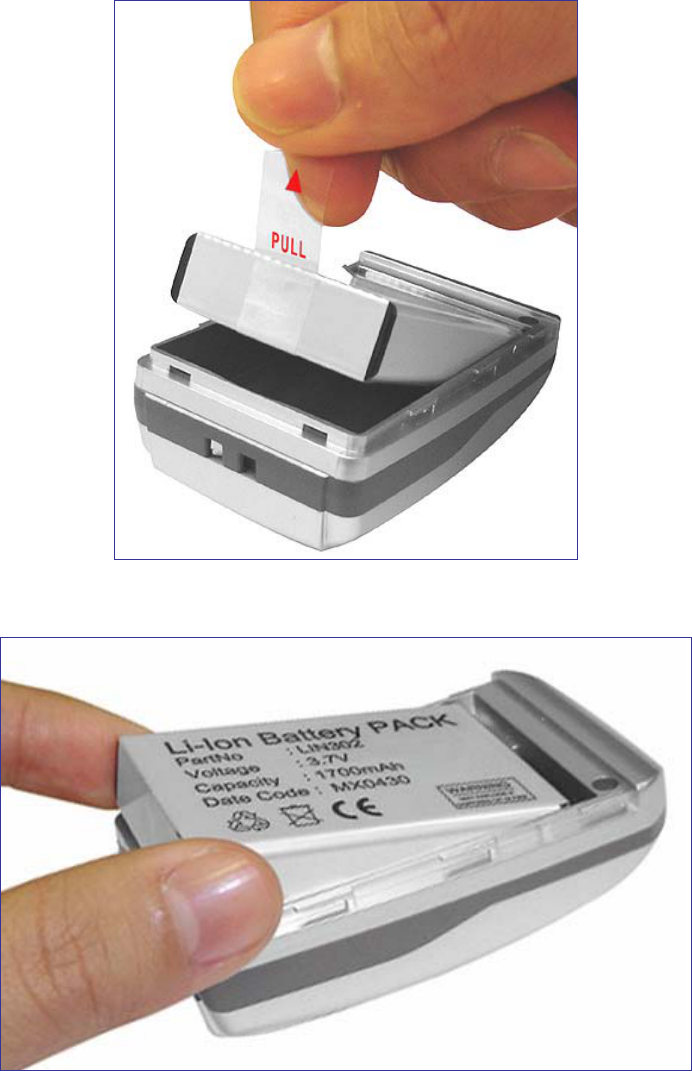
3
Figure 2, Take out the battery with pull tag
Figure 3, Put new battery into BT-332
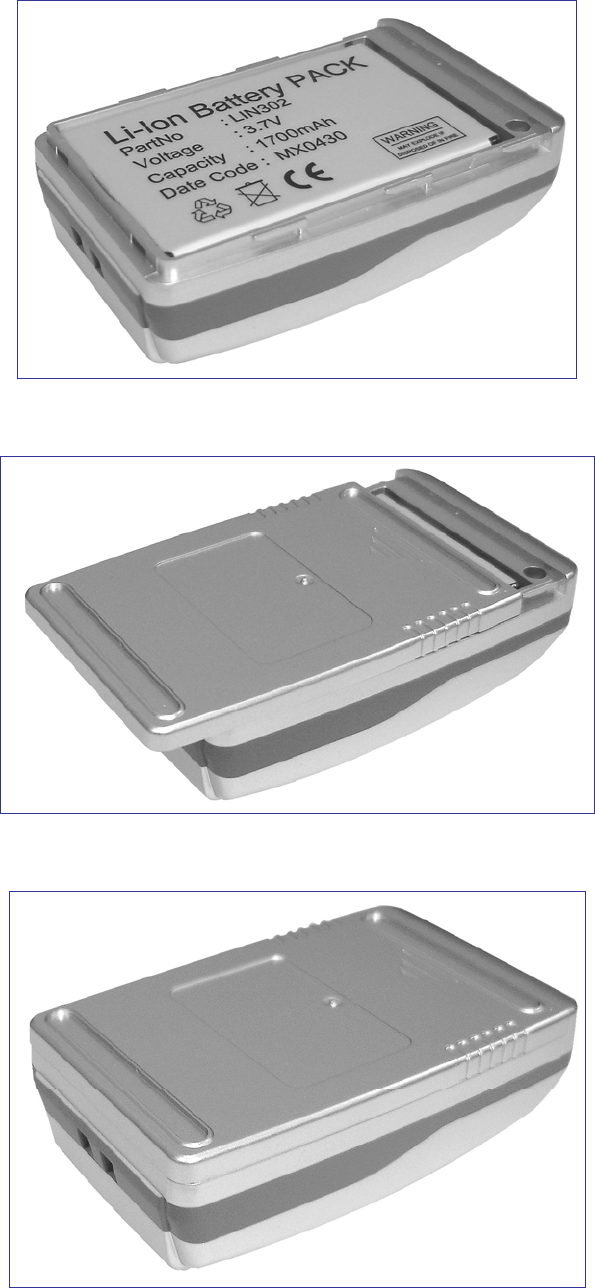
4
Figure 4, Fit battery into BT-332
Figure 5, Slide the cover of battery to close
Figure 6, Slide the cover of battery to close
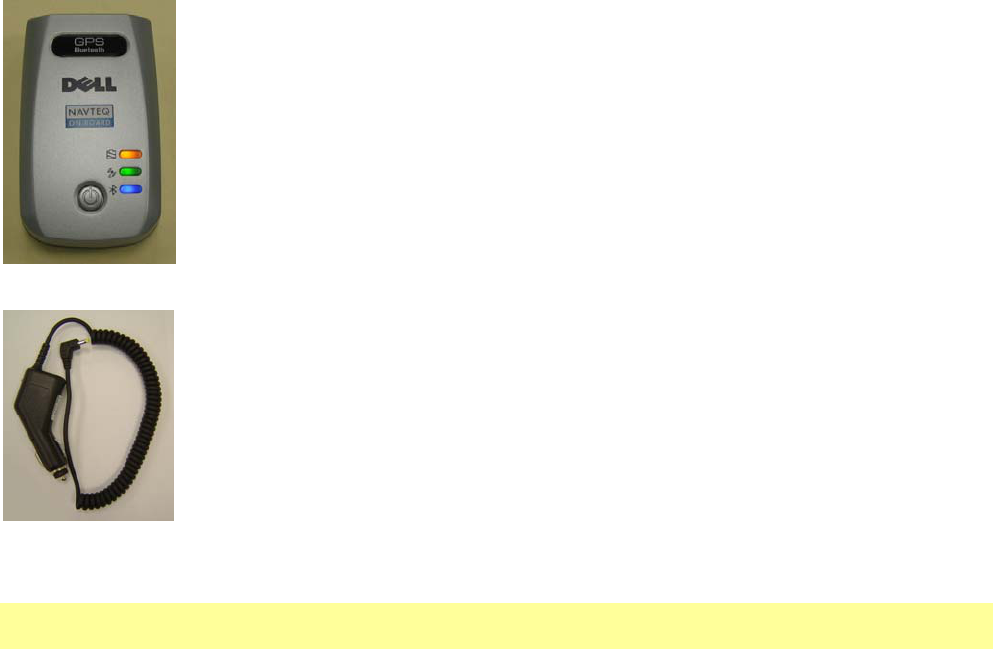
5
1.3 Accessories
BT-332
Car charge adapter
2. Introduction
The BT-332 is a GPS receiver with Bluetooth interface and built-in active antenna for
high sensitivity to tracking signal. Based on the SiRF star III Low power chip set and
supports all functions (Single Sat updates in reduced visibility, Superior urban canyon
performance, FoliageLock for weak signal tracking, etc.). The BT-332 is well suited to system
integrations including PDA, Smart phone, Tablet PC and Notebook PC with Bluetooth
devices. It satisfies a wide variety of applications that are purposes in automotive and
outdoor recreation navigation systems.
2.1 Package
Before you start up, make sure that your package includes following items. If any item
is missing or damaged, please contact your dealer immediately.
Bluetooth GPS Receiver
A CD with the User Manual and the Testing Program.
DC Car Power Charger
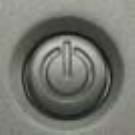
6
2.2 Power Switch
Power on:
Press the power button 1 second until the GPS status LED is on.
Power off:
Press the power button 1 second until the GPS status LED is off.
2.3 Power Jack
The power jack lets you to connect either a DC car power charger (included) or AC
power charger (included) to recharge the internal battery. Please note that the adapter rating
5V, 1.2 A, positive pole center.
2.4 LED Function
Bluetooth Status LED (Blue):
Blinking (Slowly) ---- Not connected to any Bluetooth device.
Blinking (Quickly) ---- Connected to other Bluetooth device.
GPS Status LED (Green):
Blinking ---- GPS position is fixed
Steady light ---- GPS position is not fixed
Battery Status LED (Red/Yellow):
Red ---- Battery power is critically low. Charge it immediately.
Yellow ---- Battery is charging now.
LED off ---- Battery is partially full or fully charged.
2.5 Power-saving Function
When you start the power of the Bluetooth GPS Receiver BT-332, if the Bluetooth is
not connected to any devices within 10 minutes, BT-332 will turn off the power automatically,
and all the LED will go off simultaneously.

7
3. Specification
3.1 System Specification
Electrical Characteristics
(Receiver)
Frequency L1, 1575.42 MHz
C/A Code 1.023 MHz chip rate
Channels 20 all-in-view tracking
Tracking Sensitivity -159 dBm
Accuracy
Position Horizontal 10m 2D RMS (SA off)
WAAS enabled 5m 2D RMS (SA off)
Time 1 micro-second synchronized to GPS time
Velocity 0.1m/sec 95% (SA off)
Datum
Datum WGS-84
Acquisition Rate
Hot start 1 sec., average (with ephemeris and almanac valid)
Warm start 38 sec., average (with almanac but not ephemeris)
Cold start 42 sec., average (neither almanac nor ephemeris)
Reacquisition 0.1 sec. average (interruption recovery time)
Protocol
GPS Output Data NMEA 0183 protocol, and supports command: GGA(1sec),
GSA(1 sec), GSV(5 sec), RMC(1sec) ( VTG and GLL are
optional)
GPS transfer rate 38400,N,8,1
Dynamic Condition
Acceleration Limit Less than 4g
Altitude Limit 18,000 meters (60,000 feet) max.
Velocity Limit 515 meters/sec. (1,000 knots) max.
Jerk Limit 20 m/sec**3
Power
Voltage Built-in rechargeable battery(1650 mAh) and 5V DC input
charging circuit
Operation Time 15 hr. After fully recharged, in continuous mode
>20 hr in trickle power mode
Physical Characteristics
Dimension 72.5mm x 40.4mm x 26mm
Weight 80 g
Temperature
Operating -20°~ 60°C
Storage -30°~ 80°C
Humidity Up to 95% non-condensing

8
3.2 Bluetooth Specification
● Bluetooth V2.0 Compliant
● Supply Voltage : 2.8V ~ 3.3V
● Frequency Range : 2.402 ~ 2.480 GHz
● Receiver Sensitivity : -80 dBm
● Transmit Power : Class 2
● Transmitting Range : 10 m (Depends on environment)
● Power Consumption : 45 mA (Typical)
4. Usage
4.1. For PDA with built-in Bluetooth
(1) Turn on the power switch in BT-332.
(2) Please refer to the user manual of PDA to enable the Bluetooth of PDA connecting
to the BT-332. Some PDAs may need the Bluetooth passkey, the passkey is
“0000”.
(3) Check the number of COM port used by Bluetooth.
(4) Run the suitable mapping/navigation software and select the correct COM port &
baud rate: 38400.
4.2. For PDA with Bluetooth Compact Flash card
(1) Turn on the power switch in BT-332.
(2) Please refer to the user manual of Bluetooth Compact Flash card to enable it
connects to the BT-332. Some Bluetooth devices may need the Bluetooth passkey,
the passkey is “0000”.
(3) Check the number of COM port used by Bluetooth. (Example COM 6).
(4) Running the suitable mapping/navigation software and select the correct COM
port & baud rate: 38400.
4.3. For Notebook with Bluetooth device

9
(1) Turn on the power switch in BT-332.
(2) Please refer to the user manual of Bluetooth device to enable it connects to the
BT-332. Some Bluetooth devices may need the Bluetooth passkey, the passkey is
“0000”.
(3) Check the number of COM port used by Bluetooth. (Example COM 6).
(4) Running the suitable mapping/navigation software and select the correct COM
port & baud rate: 38400.
Note: The Bluetooth device in most of the applications have an “auto-detect” feature
that you do not need to select the Baud Rate.
5. How to test your Bluetooth GPS Receiver?
The testing program only supports the Microsoft Windows CE & Pocket PC based PDA
platform.
1. Run the “GPSinfo.exe” to execute the installation procedure of testing program (via
PC and ActiveSync).
2. Run the “GPS Information” program from “Start → Program files” of PDA.
Here is the description of “GPS Information” testing program :
User must select COM port , Baud Rate (38400) and click the [Star GPS] button to start
receiving GPS data.
Note: The Bluetooth device in most of the applications have an “auto-detect” feature
that you do not need to select the Baud Rate.
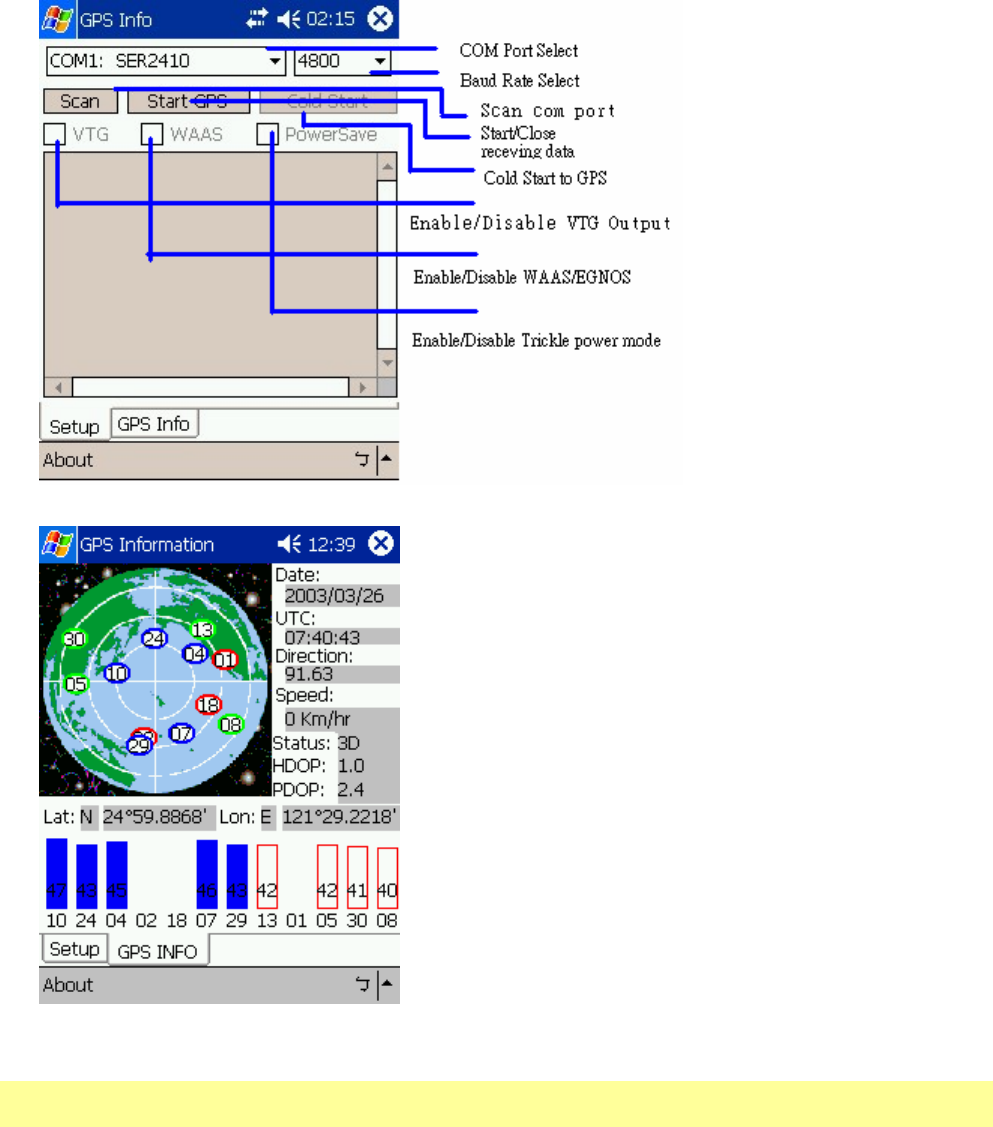
10
6. Trouble shooting
Bluetooth is unable to connect
A) Check if the GPS Bluetooth indicator is flashing normally. That is, flash one per each
three second means the product is under standby mode; flash once per second
means Bluetooth has been online already.
B) Check if energy level is sufficient. If red LED is lid up, then the battery level is
insufficient, please recharge it until the red indicator is off (recharge is complete).
11
GPS cannot be positioned
A) Check if GPS indicator operates normally or not. If the indicator is constantly lid up,
it means that GPS is in operation; if the indicator is flashing, it means GPS is
positioned already.
B) If GPS cannot be positioned for long, apply GPS info software to make a Cold Start
first, and then move to an open space performing the positioning task.
Check if power level is sufficient. If the red LED lights up, it means the power is
insufficient, please recharge it until the red indicator is off (recharge is complete).
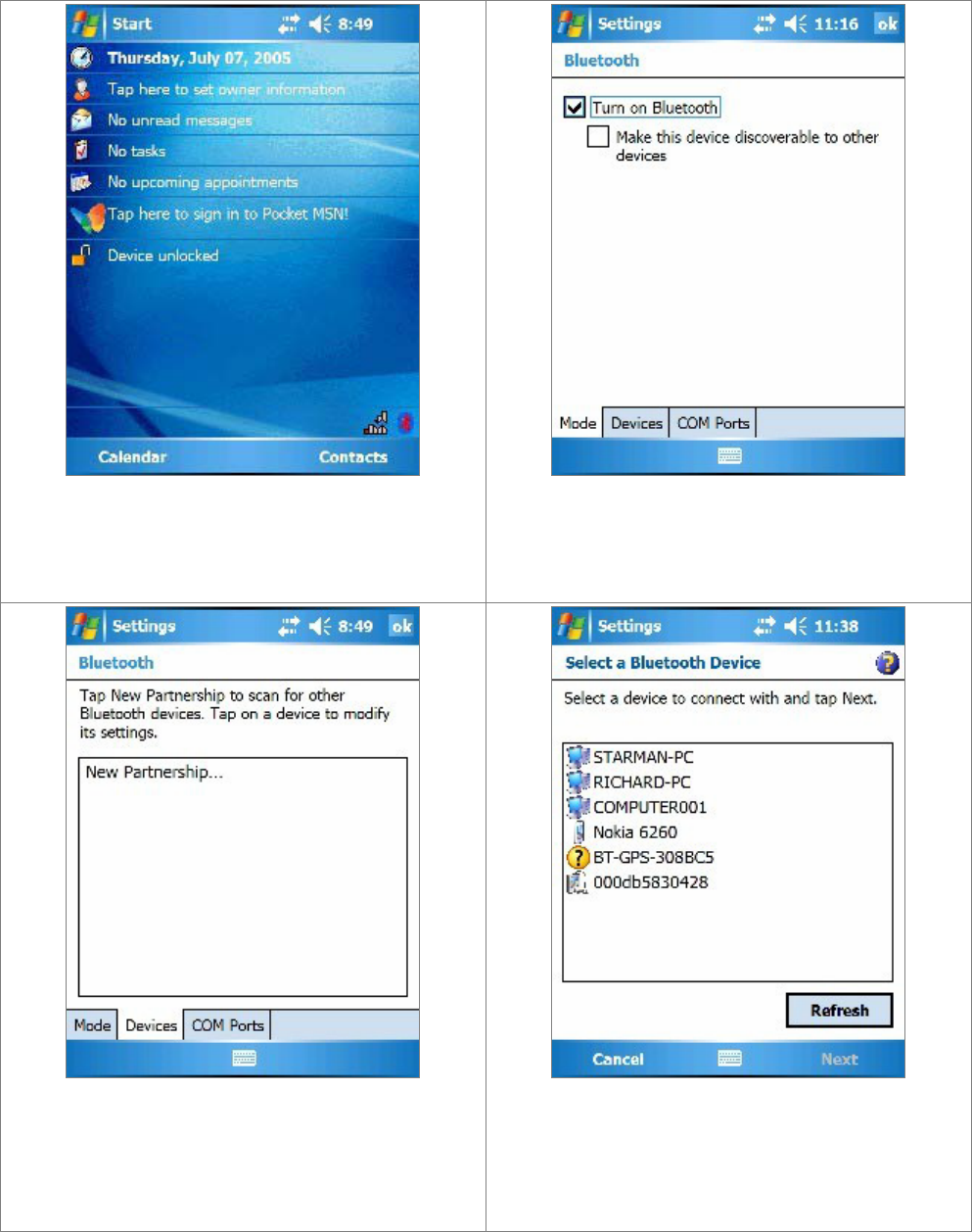
12
Appendix A:
Connect bluetooth GPS receiver with Windows Mobile Version 5 Pocket PC
1. Tap on the bluetooth button on
right lower corner.
2. Turn on your Bluetooth GPS
receiver.
3. Check “Turn on Bluetooth”.
4. Tap the “Devices” tab, and tap
“New Partnership…”.
5. It will search for all the bluetooth
devices.
6. Select a device (for example
“BT-GPS-308BC5”) and tap
Next.
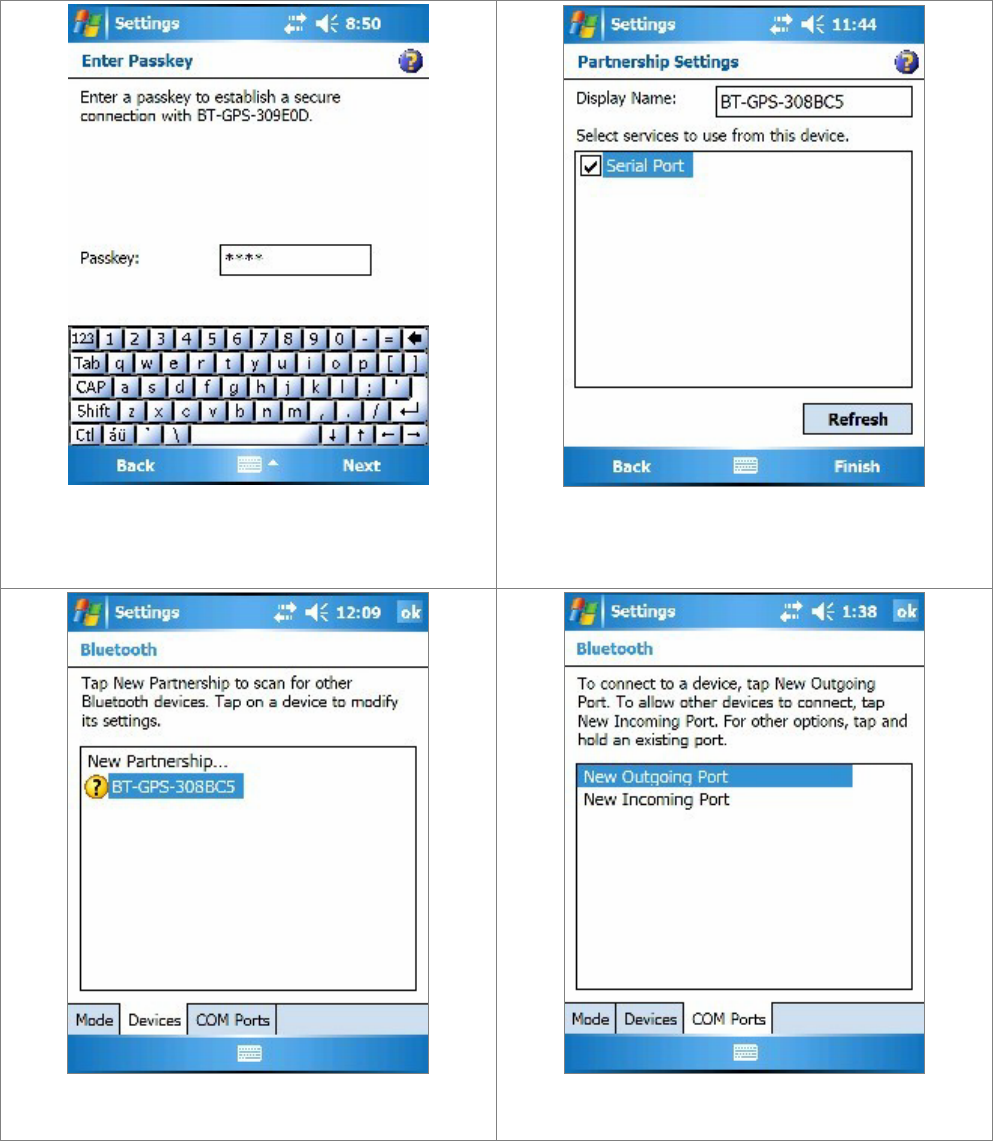
13
7. Enter Passkey “0000” and tap
Next.
8. Check “Serial Port” and tap
Finish.
9. The device will be shown on
the list.
10. Tap the “COM Ports” tab, and
select “New Outgoing Port”.
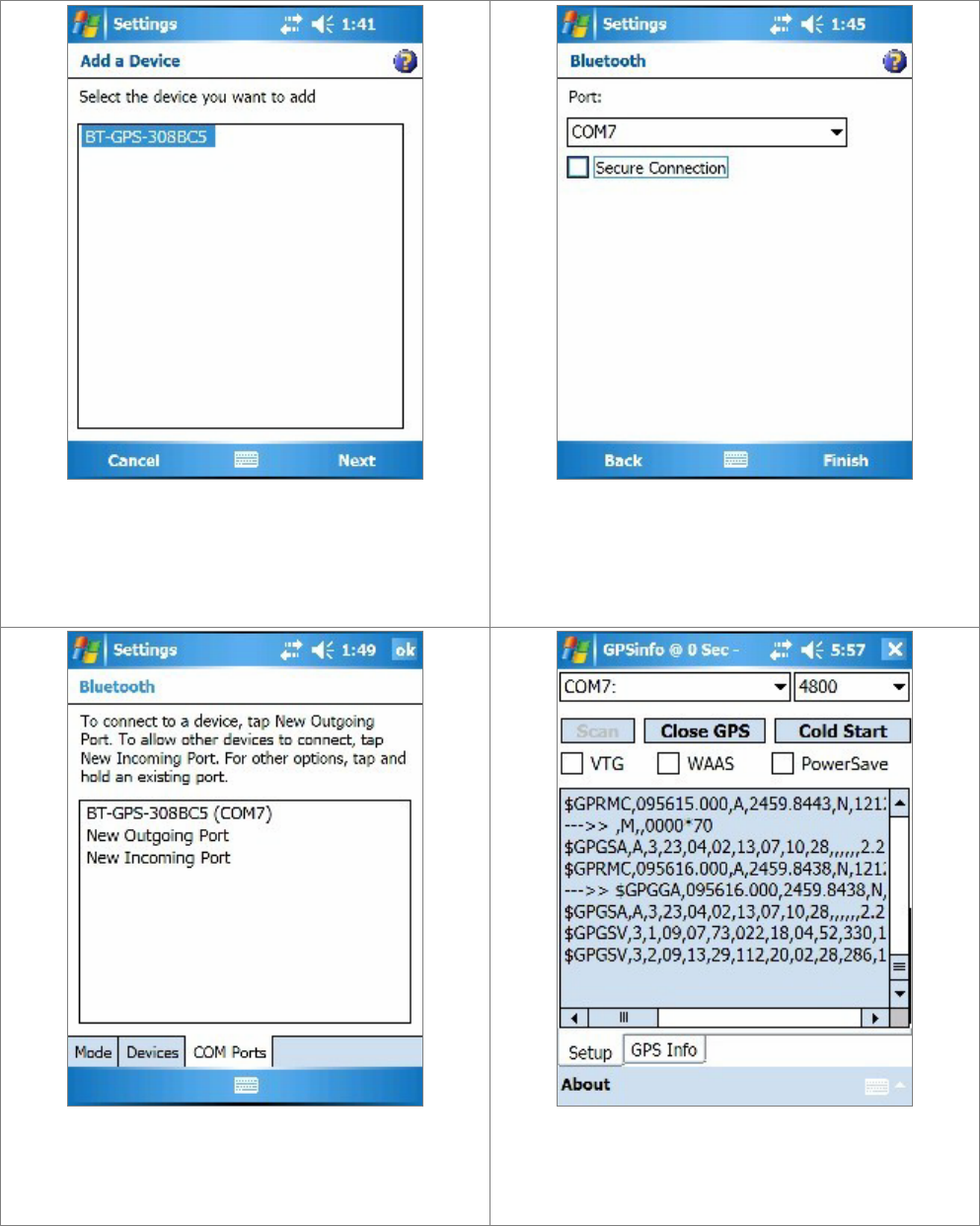
14
11. Select the device and tap
Next.
12. Uncheck “Secure Connection”
and from the drop down box
select a COM port nubmer (for
example, COM7), and then tap
Finish.
13. The device with it’s COM port
number will be shown on the
list.
14. Now you can go to GPSinfo
program, set the correct COM
port and test the GPS
receiver.
15
FCC Notices
Federal Communication Commission Interference Statement
This equipment has been tested and found to comply with the limits for a Class B
digital device, pursuant to Part 15 of the FCC Rules. These limits are designed to
provide reasonable protection against harmful interference in a residential installation.
This equipment generates, uses and can radiate radio frequency energy and, if not
installed and used in accordance with the instructions, may cause harmful
interference to radio communications. However, there is no guarantee that
interference will not occur in a particular installation. If this equipment does cause
harmful interference to radio or television reception, which can be determined by
turning the equipment off and on, the user is encouraged to try to correct the
interference by one of the following measures:
- Reorient or relocate the receiving antenna.
- Increase the separation between the equipment and receiver.
- Connect the equipment into an outlet on a circuit different from that
to which the receiver is connected.
- Consult the dealer or an experienced radio/TV technician for help.
This device complies with Part 15 of the FCC Rules. Operation is subject to the
following two conditions: (1) This device may not cause harmful interference, and (2)
this device must accept any interference received, including interference that may
cause undesired operation.
FCC Caution: Any changes or modifications not expressly approved by the party
responsible for compliance could void the user's authority to operate this equipment.
IMPORTANT NOTE:
FCC Radiation Exposure Statement:
This equipment complies with FCC radiation exposure limits set forth for an uncontrolled
environment. End users must follow the specific operating instructions for satisfying RF
exposure compliance.
This transmitter must not be co-located or operating in conjunction with any other
antenna or transmitter.